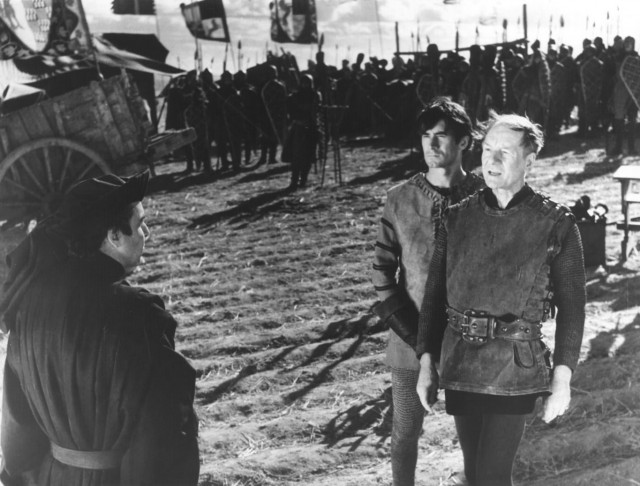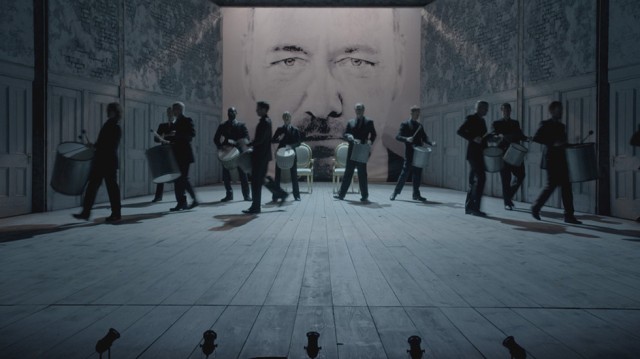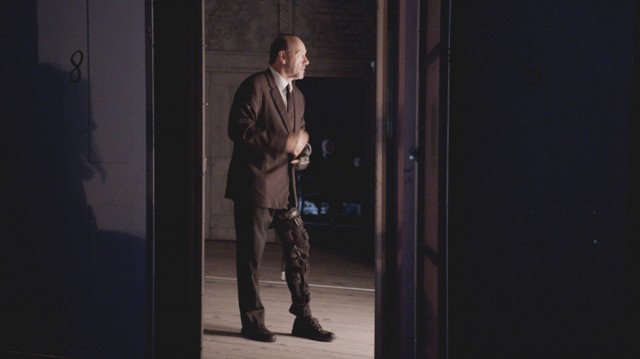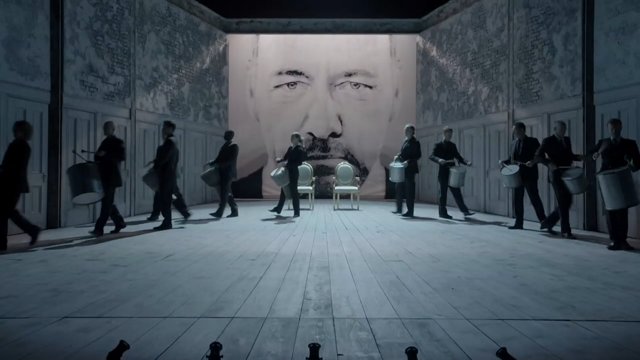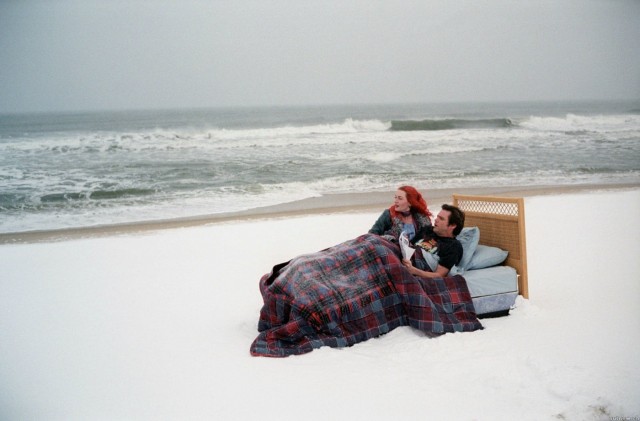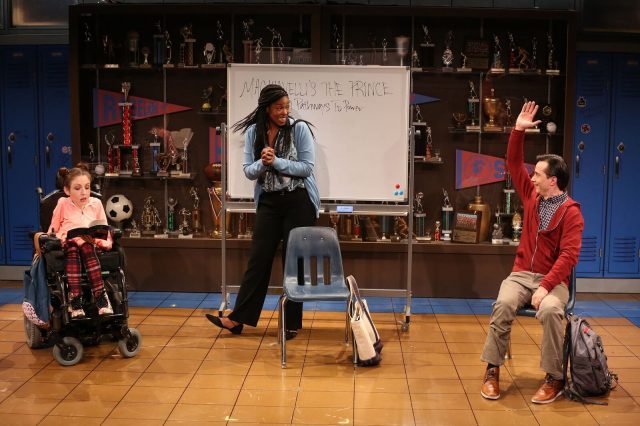
Richard Gloucester (Gregg Mozgala) thinks he has all the answers in Teenage Dick at the Public (photo by Carol Rosegg)
The Shiva Theater at the Public Theater
425 Lafayette St.
Tuesday – Sunday through July 29, $55
212-539-8500
publictheater.org
ma-yitheatre.org
I can only imagine the elevator pitch for Mike Lew’s latest play, which opened last night at the Public’s Shiva Theater. “It’s Richard III in high school, about a student with cerebral palsy who will do just about anything to become senior class president. Oh, and it’s called Teenage Dick.” The terrifically titled play, a workshop production of which ran at the Shiva in 2016, reimagines Shakespeare’s tragedy through the lens of such hit films as Clueless, Mean Girls, Election, and even Carrie while sprinkling in elements and quotes from other Shakespeare plays. It’s a bumpy ride that bites off more than it can chew, trying to be too much instead of maintaining its focus while making important points about the disabled. “Now that the winter formal gives way to glorious spring fling we find our rocks for brains hero Eddie — the quarterback — sleeping through his job as junior class president,” Roseland High School class secretary Richard Gloucester says at the start of the play. Richard is splendidly portrayed by Gregg Mozgala, whose cerebral palsy substitutes here for Richard’s physical deformities. Mozgala, a Drama Desk nominee, commissioned the work for the Apothetae, a company founded by Mozgala (who serves as artistic director) that concentrates on the “disabled experience.” Richard’s competition for the presidency is dunderheaded quarterback and prom king Eddie (Alex Breaux) and Bible-thumping overachiever Clarissa (Sasha Diamond); Richard’s primary supporter and only friend is Barbara “Buck” Buckingham (Shannon DeVido, who has spinal muscular atrophy and uses a wheelchair), who is getting tired of Richard’s breaking out into Bard-speak. “Soft you now, she approaches,” Richard says, to which Buck barks back, “Who talks like that?” Richard decides that the best way to achieve his ascendancy is through prom queen Anne Margaret (Tiffany Villarin), Eddie’s former girlfriend who harbors a secret that could ruin them both; she’s also a dancer, so his limited mobility comes to the fore. Overseeing it all is English teacher Elizabeth York (Marinda Anderson), who has assigned the class to read Machiavelli’s The Prince, which has become a kind of primer for Richard, who has studied Machiavelli’s four pathways to power: fortune, virtue, civil election, and, preferably, wickedness. As the voting for class officers approaches, Richard uses devious methods as he seeks his ultimate goal.
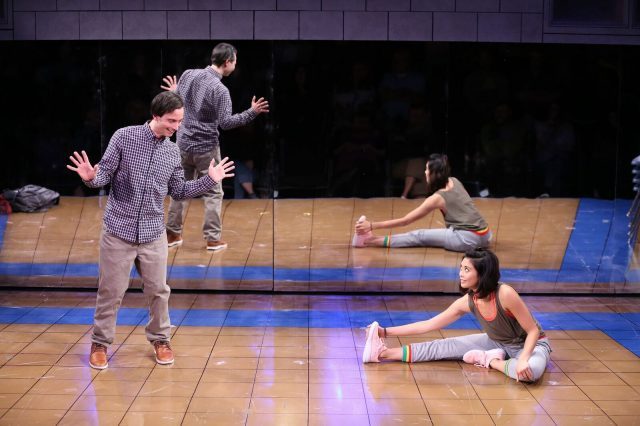
Richard Gloucester (Gregg Mozgala) woos prom queen Anne Margaret (Tiffany Villarin) in Mike Lew play (photo by Carol Rosegg)
A coproduction with Ma-Yi Theater Company, the hundred-minute Teenage Dick tackles such issues as bullying, government policy, war, and, of course, the treatment of the disabled. Tony-nominated director Moritz von Stuelpnagel (Present Laughter, Hand to God) can’t quite get rid of all the choppiness in Lew’s (Bike America, Tiger Style!) script, which caroms too quickly between realism and abstraction while deciding how close it will or won’t stick to Shakespeare’s general plot. It works best when it stays on point, echoing Richard’s dispatching of Clarence and Edward and wooing of Queen Margaret, and doesn’t preach, which it ultimately does. Lew and von Stuelpnagel are not sure just what to do with Elizabeth, whose character and purpose feel ill-defined. Wilson Chin’s set ranges from a high school hallway with lockers and a trophy case to a teen girl’s bedroom and a dance studio, and DeVido (The Healing, Difficult People) has a blast motoring through it. Mozgala (Cost of Living, Light Shining in Buckinghamshire) makes a fine Richard, particularly as the play explores whether one can rise above their station and whether it is better to be loved or feared, which is especially relevant in high school in twenty-first-century America. “Given a choice, it is best to be feared,” he says. “For man is ungrateful, fickle, and greedy, and thusly being loved is a bond they may break. Whereas being feared is sustained by a dread of punishment that won’t ever fail you.” Unfortunately, the play doesn’t quite live up to its awesome title, which works both as a riff on the name of the Shakespeare play it’s inspired by and because it features a protagonist who is, well, kind of a dick.
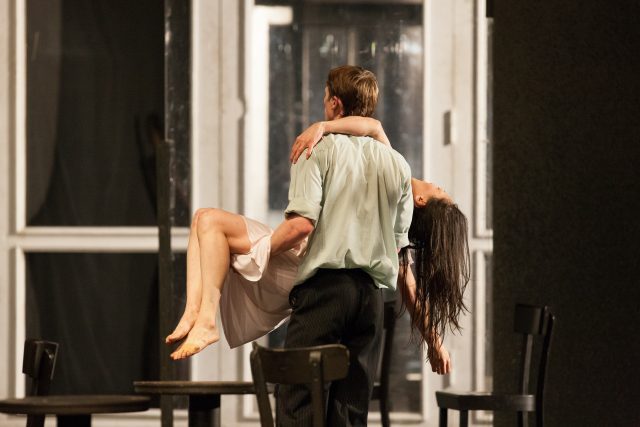
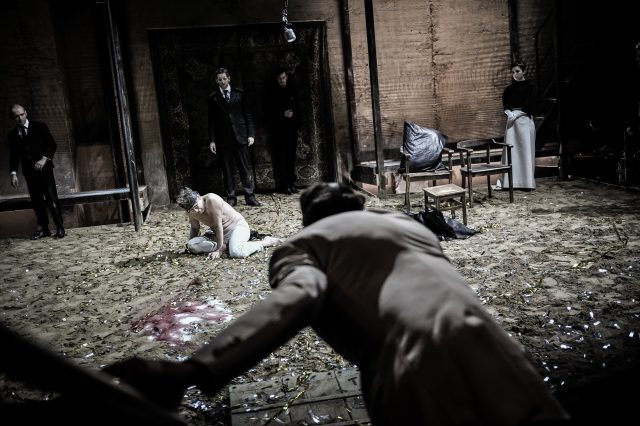
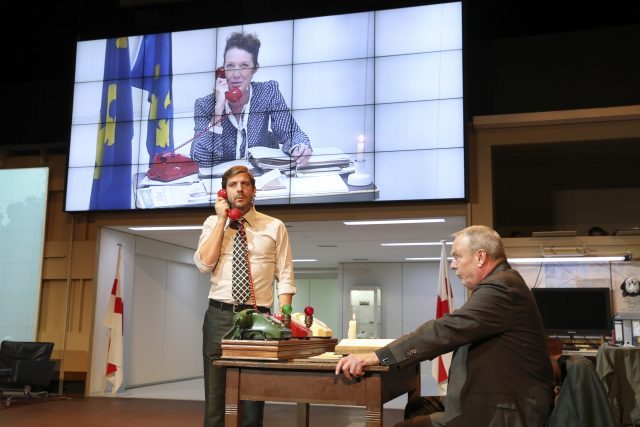
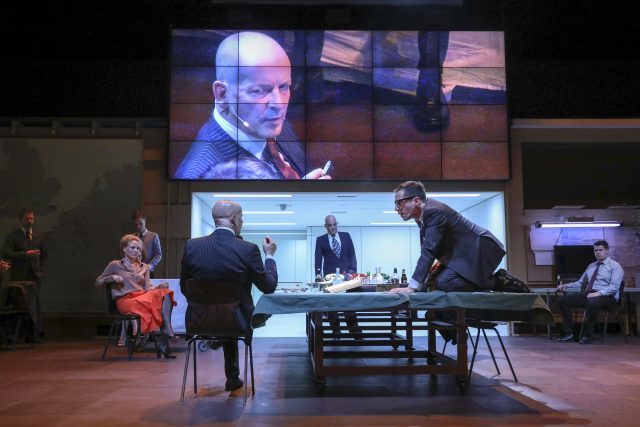
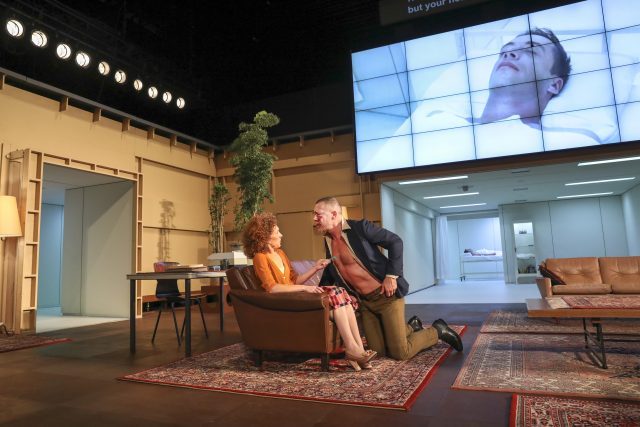
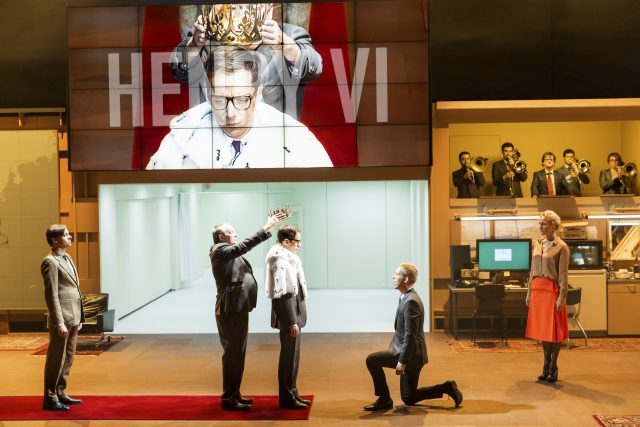
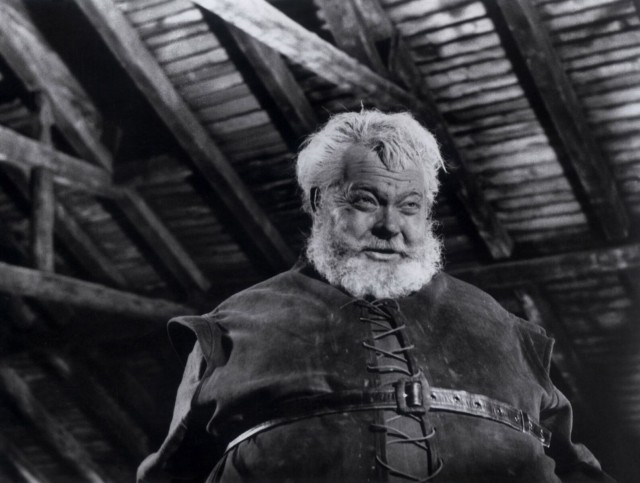
 “Jesus, the days that we have seen,” Justice Shallow (Alan Webb) says to Sir John Falstaff (Orson Welles) several times at the beginning of Chimes at Midnight, as the two old friends walk through a snowy forest. “We have heard the chimes at midnight,” Falstaff replies. Welles’s career as a writer, director, and actor in theater, television, radio, and film was fraught with conflict as budget problems, scheduling issues, and fights with producers led to a slew of unfinished projects and works edited against his wishes. Welles might have achieved his legendary status with such classic films as Citizen Kane, The Magnificent Ambersons, and Touch of Evil, but his own personal favorite was the 1965 black-and-white Chimes at Midnight (aka Falstaff). Welles spent decades working on his unique retelling of the story of the big, bawdy Sir John, attempting various stage productions before finally making the film in Spain in 1964-65. The script was adapted from Shakespeare’s Henry IV, Parts 1 and 2, Richard II, Henry V, and The Merry Wives of Windsor, with historical narration by Sir Ralph Richardson from the sixteenth-century Holinshed’s Chronicles. Welles is both boisterous and sad as Falstaff, a larger-than-life braggadocio who is both friend and father figure to Hal (Keith Baxter), the Prince of Wales, whose father, Henry IV (Sir John Gielgud), gained the throne by murdering Richard II. Hal would rather cavort with Ned Poins (Tony Beckley), Falstaff, and Falstaff’s rogue circle, which includes Pistol (Michael Aldridge), Bardolph (Patrick Bedford), and Peto, than serve the king at the castle. Meanwhile, Richard II’s supporters, led by the Earl of Worcester (Fernando Rey), Henry Percy, known as Hotspur (Norman Rodway), and the Earl of Northumberland (José Nieto), plot to take back the crown. Much of the film is set in the Boar’s Head Tavern, which is run by the elderly Mistress Quickly (Margaret Rutherford) and where Falstaff engages with prostitute Doll Tearsheet (Jeanne Moreau). Everything comes crashing together during the Battle of Shrewsbury, one of the most exciting, breathtaking battle scenes ever filmed, a nearly ten-minute spectacle of fierce fighting interlaced with Falstaff’s comic bumbling and concluding with Hal and Hotspur’s climactic face-off.
“Jesus, the days that we have seen,” Justice Shallow (Alan Webb) says to Sir John Falstaff (Orson Welles) several times at the beginning of Chimes at Midnight, as the two old friends walk through a snowy forest. “We have heard the chimes at midnight,” Falstaff replies. Welles’s career as a writer, director, and actor in theater, television, radio, and film was fraught with conflict as budget problems, scheduling issues, and fights with producers led to a slew of unfinished projects and works edited against his wishes. Welles might have achieved his legendary status with such classic films as Citizen Kane, The Magnificent Ambersons, and Touch of Evil, but his own personal favorite was the 1965 black-and-white Chimes at Midnight (aka Falstaff). Welles spent decades working on his unique retelling of the story of the big, bawdy Sir John, attempting various stage productions before finally making the film in Spain in 1964-65. The script was adapted from Shakespeare’s Henry IV, Parts 1 and 2, Richard II, Henry V, and The Merry Wives of Windsor, with historical narration by Sir Ralph Richardson from the sixteenth-century Holinshed’s Chronicles. Welles is both boisterous and sad as Falstaff, a larger-than-life braggadocio who is both friend and father figure to Hal (Keith Baxter), the Prince of Wales, whose father, Henry IV (Sir John Gielgud), gained the throne by murdering Richard II. Hal would rather cavort with Ned Poins (Tony Beckley), Falstaff, and Falstaff’s rogue circle, which includes Pistol (Michael Aldridge), Bardolph (Patrick Bedford), and Peto, than serve the king at the castle. Meanwhile, Richard II’s supporters, led by the Earl of Worcester (Fernando Rey), Henry Percy, known as Hotspur (Norman Rodway), and the Earl of Northumberland (José Nieto), plot to take back the crown. Much of the film is set in the Boar’s Head Tavern, which is run by the elderly Mistress Quickly (Margaret Rutherford) and where Falstaff engages with prostitute Doll Tearsheet (Jeanne Moreau). Everything comes crashing together during the Battle of Shrewsbury, one of the most exciting, breathtaking battle scenes ever filmed, a nearly ten-minute spectacle of fierce fighting interlaced with Falstaff’s comic bumbling and concluding with Hal and Hotspur’s climactic face-off. 